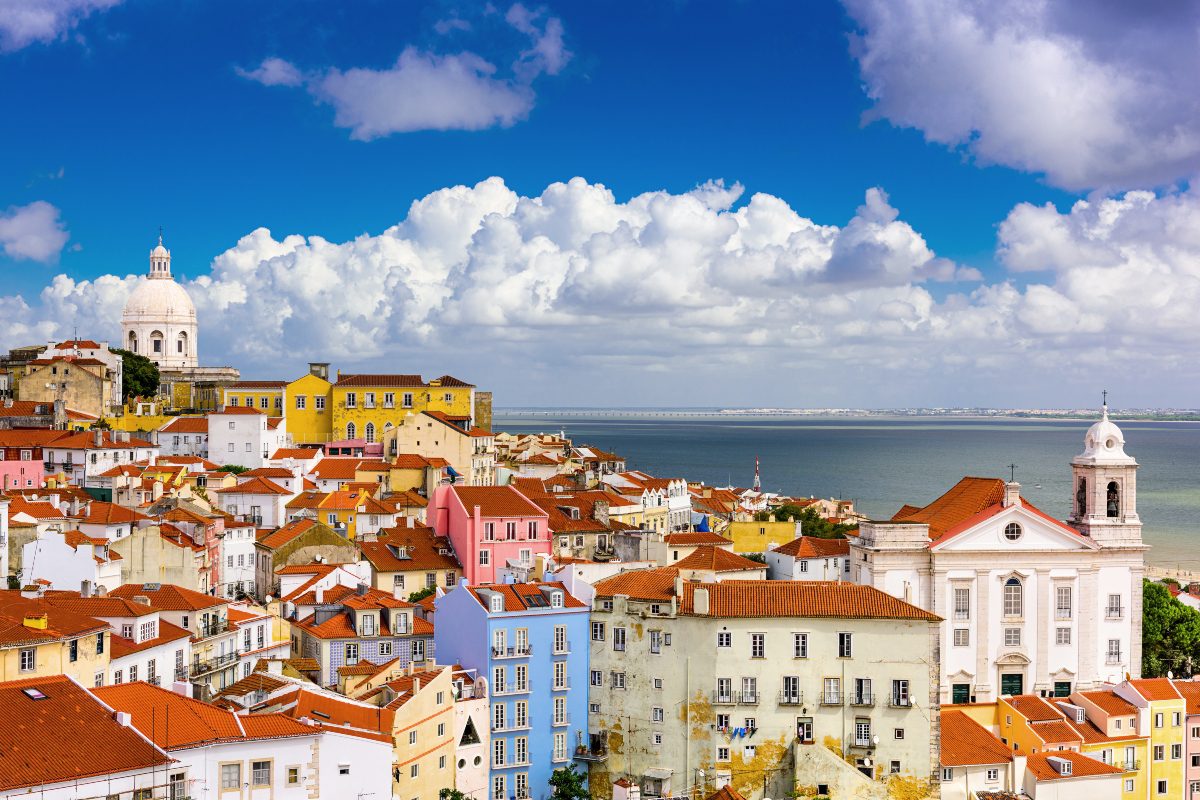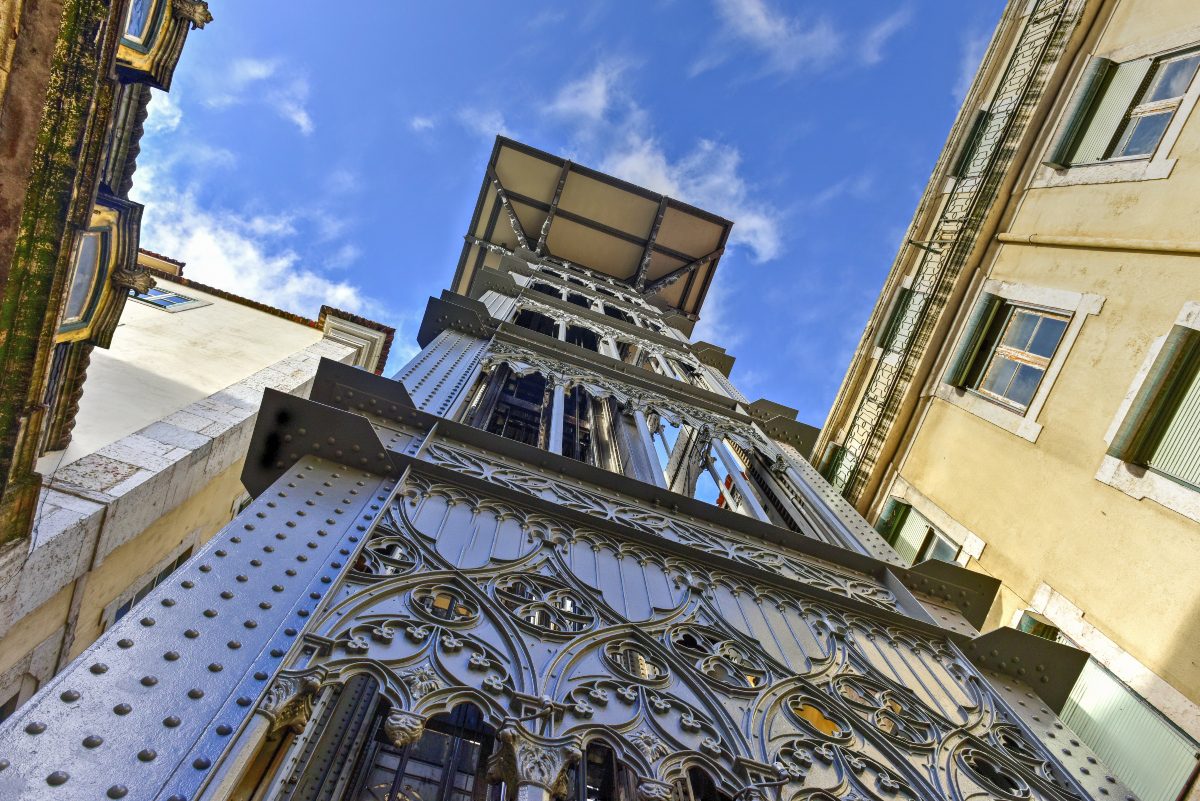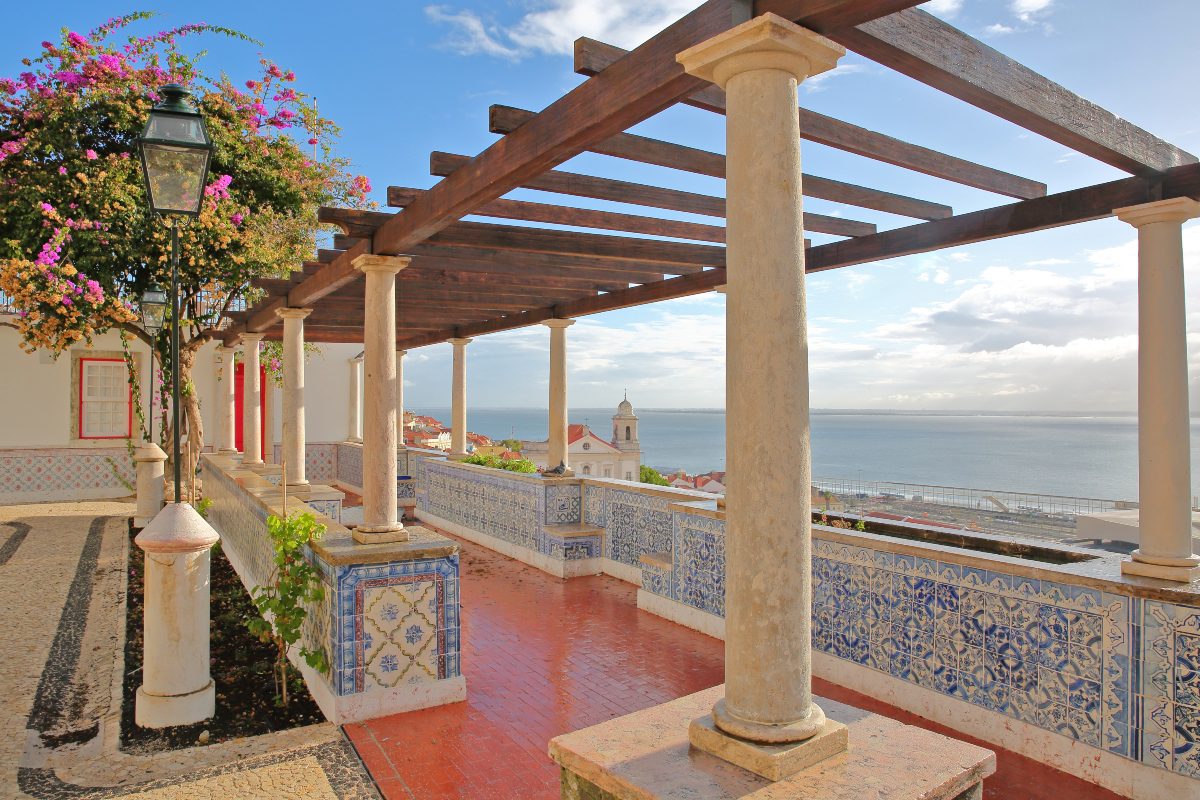Best Things to Do in Lisbon with Kids
- February 6, 2023
- 6 Min Read
Lisbon was a surprise to me. It has a reputation of being “Old Europe,” a bit stodgy and not as exciting as some of the other Western European cities on offer. Boy, is that wrong — Lisbon is thriving, with architectural projects and arts and cultural centers giving the city a revitalized feel. It’s impossible to escape the sense of being in the middle of something new that builds on (and still honors) the very old. With the sun dazzling on the tile-paved streets and reflecting off the Tagus River, Lisbon is a bright spot in a European family itinerary.

Top Things to Do in Lisbon for Families
Explore the Neighborhoods
Lisbon is really a collection of small neighborhoods, each with its own character. I first arrived in the Chiado section of town, named for a famous Portuguese poet (as many of the squares in Lisbon are). The area recently underwent a massive renovation, with several buildings being revamped at once. It’s filled with cultural offerings like the Chiado Museum of Contemporary Art and the Sao Carlos Theater, Lisbon’s opera house — a gorgeous, gilt-edged building that stages free Saturday morning concerts for children.

A tram ride will give families the best overview of Lisbon’s top spots (though a young child might enjoy an entire day just riding the tram!). One tram ticket works for an all-day hop on/hop off plan; it’s best buy it from a machine rather than the driver. Other neighborhoods we passed through on the tram include the Alfama, Lisbon’s oldest quarter, with the narrowest streets I’ve ever seen. When I was there they were preparing for the annual sardine festival, and the labyrinthine streets were decorated with colored flags and bunting. This is also home to some of the city’s most iconic sights: Castelo de Sao Jorge, a fortress with sections that date back more than a thousand years, plus a Camera Obscura where families get a virtual 360-degree tour of the city; and the National Tile Museum, a treat for anyone interested in the decorative arts.
TIP: Tram 28 is hugely popular with tourists, as its route includes Lisbon’s major highlights. However, lines to board can be very long and once you are on, it is likely to be standing room only. Unless you can snag a seat, you won’t be able to see anything from the windows. A less crowded alternative is Tram 12, which passes many of the same areas. Board at the Martim Moniz stop and ride the tram in a round-trip loop.
While it’s tempting to explore Lisbon on foot, especially because of the beautiful tiled pedestrian streets and tile-fronted buildings, it is not called the “City of Seven Hills” for nothing. Several small funiculars line the exceedingly steep side streets to connect neighborhoods. The Elevador da Gloria is one of the most charming, carrying passengers from the high-end Baixa district to the lively Bairro Alto. The Elevador da Bica is another popular ride thanks to its dramatic river backdrop.

Another fun option for traversing Lisbon’s ups and downs is the Santa Justa lift, which allows some of the most beautiful views of the city and connects the Baixa neighborhood to the Bairro Alto above. With construction having begun in 1901, I was told by a guide that it is the oldest elevator in Europe (those with a fear of heights may want to avoid it). A ride up or down gives the visitor a feel for the layout of this old city.
Want help planning a trip to Portugal with kids?
That's what we do! Our Family Travel Advisors can help you choose where to go, book vetted accommodations, create a custom itinerary and more. Click to send us a request!

Walk Through the Age of Discovery
The Belem neighborhood, a quick tram or bus ride from the city center, is a must. One of the most exciting aspects of the Portuguese story is the Age of Discovery, when overseas exploration was at its peak, and the neighborhood immerses you in this pivotal point in history. A walk by the Tagus River gives you a window into the nautical mindset of the Portuguese. Kids will be wowed by the massive Age of Discovery monument; it’s worth reading up on the famous Portuguese explorers so everyone can hunt for familiar faces.
The Belem Tower is next door to the monument. Built in the 16th century to guard the harbor, it is a Lisbon icon. Parents will be wowed by the chic little cocktail carts that dot the riverfront, good for a break while enjoying the view of the beautiful 25th of April Bridge over the river. Belem also has easy access to the Oceanarium, an architecturally interesting, very large aquarium that will captivate younger kids.
TIP: While in this area, don’t miss Pasteis de Belem, the bakery where Portugal’s iconic pastel de nata (egg custard tart) was born. The line for takeaway can wrap around the block, but the line for table service is usually much shorter.

Savor the Dining Scene
To be in Lisbon is to enjoy some of the freshest seafood in the world. It’s impossible to escape the presence of the water here, and the dining options reflect the active fishing culture that still exists. Choices range from the many sidewalk cafes in the revitalized Commerce Square next the river, to tiny restaurants hidden away in the Alfama. At all of them, offerings from the local waters are ubiquitous, along with Portugal’s favorite import: bacalao (salted codfish).
Another old-meets-new touch is the Time Out Food Market (also called the Mercado da Ribeira). Where there used to be a traditional open-air market, some of the best chefs in Lisbon have set up shop, but none of the venues is stuffy or expensive. With the food hall format, a family can pick and choose from an array of dining options, do some shopping at the pop-up concept stores filled with artisanal Portuguese offerings, and soak up the atmosphere of the huge space. It gets very busy in the evenings, so you might have to wait a while for seats.

Families Should Know
• Plan on at least two or three days to enjoy Lisbon. It’s also a great stop on a longer trip through Portugal — Porto, the country’s other top urban destination, is just a 3-hour train ride north. You can easily do both in a week. Or pair a few days in Lisbon with beach time in the Algarve on the southern coast.
• While Lisbon has a family-centered culture, it is not a stroller-centric city due to its tile and cobblestone streets. You may struggle with a stroller here, especially with the hills. However, Lisboans are friendly, and I saw locals helping to carry a stroller onto a tram.
• When deciding which area to stay in with kids, the Baixa and Chiado districts each make for a fantastic and centrally located home base. Bairro Alto has a bit of a party vibe after sundown, making it less family-friendly. Our Travel Advisor team can help you choose the best property for your needs, often with exclusive perks for our clients; contact us for booking help.
Relevant Links:
Browse all family-friendly accommodations and activities in Portugal on Ciao Bambino
Cascais, Portugal: A beach haven that’s perfect for young kids
Great kid-friendly things to do in the Algarve, Portugal
The perfect Portugal road trip with kids
Off-the-grid adventure abounds during an Azores vacation in Portugal
Essential tips for walking the Camino de Santiago with kids
Adria experienced Lisbon as part of a media trip. As always, our opinions are our own on Ciao Bambino.
Editor’s note: This post was accurate when published. We advise checking independently for the latest information and updates. Ciao Bambino does not accept responsibility or liability for any errors or omissions in, or for any actions taken based on, the information presented.






 travel recommendations, inspiring adventures, and exclusive travel offers
travel recommendations, inspiring adventures, and exclusive travel offers
Start a Discussion
1 Comments